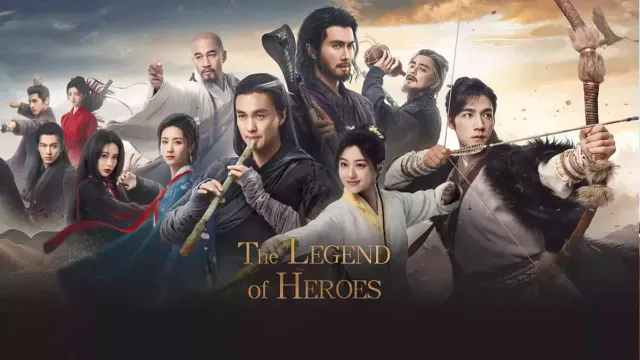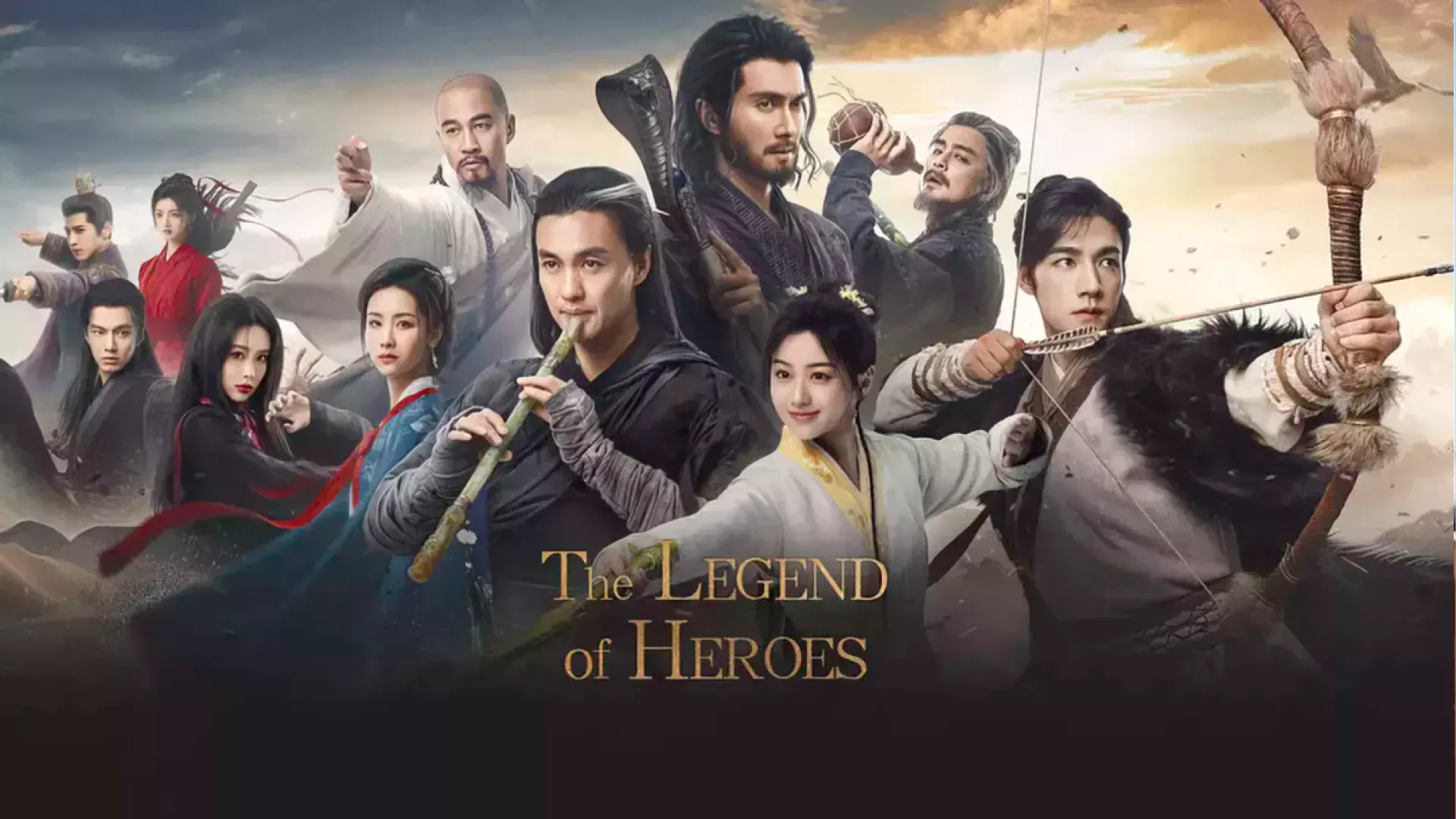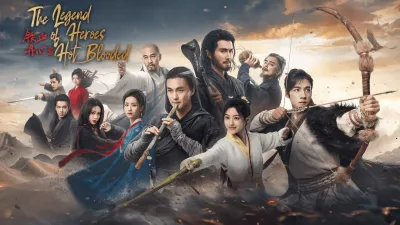The Four Devils of the Yellow River (simplified: 黄河四鬼, traditional: 黃河四鬼, Jyutping: wong4 ho4 sei3 gwai2, pinyin: Huánghé Sìguǐ) was a notorious martial arts organization that operated in the Yellow River region during the late Song Dynasty. As a group of four sworn brothers, they represented the darker aspects of the jianghu, where martial artists could use their abilities for questionable purposes.
The Four Devils’ organization served as a crucial element in the broader narrative of The Legend of the Condor Heroes, demonstrating how martial artists could band together to pursue shared objectives, even when those objectives were morally ambiguous. Their involvement in the early events of the story placed them at the intersection of various conflicts and power struggles that would shape the course of the narrative.
History and origins
Formation of the organization
The Four Devils of the Yellow River was formed when four martial artists, Yu Zhaoxing, Shen Qinggang, Wu Qinglie, and Ma Qingxiong, came together and formed a sworn brotherhood. This alliance was based on shared martial arts training and mutual recognition of each other’s abilities and commitment to their common cause.
The formation of this organization reflected the complex nature of martial arts politics during this period, where individual practitioners often had to band together to achieve their objectives and to protect their interests in the dangerous world of the jianghu.
Development and expansion
As the organization developed, its members became increasingly involved in various conflicts and power struggles within the jianghu. Their reputation as formidable martial artists grew, and they became known for their willingness to use their abilities to achieve their various objectives.
This development demonstrated how martial arts organizations could evolve and adapt to changing circumstances, while also revealing the various ways in which such groups could become involved in broader conflicts and power struggles.
Role in the jianghu
The Four Devils’ role within the jianghu was characterized by their involvement in various conflicts and their willingness to use their martial arts abilities to achieve their objectives. Their actions often placed them in opposition to other martial artists and organizations, creating a complex web of alliances and rivalries.
This role demonstrated how martial arts organizations could influence the broader political landscape of the jianghu, while also revealing the various ways in which such groups could become involved in conflicts that extended beyond simple martial arts disputes.
Organization and structure
Leadership and hierarchy
The Four Devils operated as a group of equals, with no single leader but rather a collective decision-making process based on their sworn brotherhood. This structure reflected the traditional Chinese emphasis on brotherhood and mutual support, while also allowing for flexibility in their various activities and missions.
The absence of a formal hierarchy meant that decisions were made through consensus and discussion, with each member having equal voice in matters affecting the organization. This approach allowed the group to adapt quickly to changing circumstances while maintaining their internal cohesion.
Membership and recruitment
The Four Devils maintained a closed membership structure, with the four original sworn brothers forming the core of the organization. This limited membership reflected their emphasis on quality over quantity, ensuring that all members possessed the necessary martial arts abilities and commitment to the group’s objectives.
The closed nature of their membership also contributed to their internal cohesion and their ability to maintain secrecy about their various activities and missions.
Internal relationships
The internal relationships within the Four Devils were characterized by the strong bonds of loyalty and mutual support that existed between the sworn brothers. These relationships provided the foundation for their various activities and ensured that the group could function effectively even in challenging circumstances.
The strength of these internal relationships was demonstrated by the group’s ability to coordinate their actions and to support each other in various conflicts and challenges.
Martial arts and techniques
Yellow River martial arts tradition
The Four Devils’ martial arts foundation was built upon a tradition that emphasized practical combat effectiveness and the development of techniques that could be applied in various real-world situations. This tradition combined both internal and external martial arts, with particular emphasis on developing internal energy through specialized breathing exercises and meridian circulation techniques.
Their training included both offensive and defensive applications of various martial arts techniques, allowing them to engage effectively in different combat situations. The emphasis on practical effectiveness required exceptional conditioning and internal energy development, skills that all members of the organization developed through dedicated practice and training.
Internal energy cultivation
The Four Devils’ approach to internal energy cultivation followed traditional methods that emphasized the development of qi through specialized breathing exercises and meridian circulation techniques. This cultivation provided them with the foundation necessary for both martial arts combat and the maintenance of their physical conditioning.
The organization’s emphasis on internal energy development meant that their abilities extended beyond simple physical strength, incorporating sophisticated energy manipulation techniques that enhanced the effectiveness of their strikes and defensive maneuvers.
Combat applications
In practical combat situations, the Four Devils demonstrated the effectiveness of their martial arts techniques through their ability to coordinate their actions and to support each other in various conflicts. Their training emphasized the importance of timing and positioning, allowing them to maximize the impact of their attacks while minimizing exposure to counter-attacks.
The organization’s techniques’ reputation for effectiveness meant that their opponents often had to approach encounters with them cautiously, aware of the potential consequences of being struck by their trained techniques.
Activities and missions
Involvement in conflicts
The Four Devils became involved in various conflicts within the jianghu, often serving as agents for various factions or individuals who sought to achieve their objectives through martial arts means. Their involvement in these conflicts demonstrated the complex nature of martial arts politics and the various ways in which such organizations could become involved in broader power struggles.
These conflicts often required the group to coordinate their actions and to support each other in various challenging situations, demonstrating the effectiveness of their organizational structure and their martial arts abilities.
Relationships with other factions
The Four Devils’ relationships with other martial arts factions and organizations were characterized by a complex web of alliances and rivalries. Their willingness to serve various masters and to pursue various objectives meant that they often found themselves in opposition to other groups, creating a dynamic and constantly changing political landscape.
These relationships demonstrated how martial arts organizations could influence and be influenced by the broader political landscape of the jianghu, while also revealing the various ways in which such groups could become involved in conflicts that extended beyond simple martial arts disputes.
Impact on the jianghu
The Four Devils’ activities had a significant impact on the broader jianghu, influencing various conflicts and power struggles while also contributing to the development of the complex political landscape that characterized the martial arts world during this period.
Their involvement in various events demonstrated how individual martial artists and organizations could influence the broader development of the jianghu, while also revealing the various ways in which such groups could become involved in conflicts that had lasting consequences for the martial arts community.
Behind the scenes
Literary significance
The Four Devils’ role in the novel serves to illustrate the broader political and martial landscape in which the main characters operate. Their presence helps to establish the scale and scope of the conflicts and challenges that face the protagonists, providing a backdrop against which their individual struggles and achievements can be understood.
The organization also represents the various ways in which martial artists could band together to pursue shared objectives, showing how organizational structures could influence the broader development of the jianghu and the various conflicts that characterized this complex world.
Character development
The Four Devils’ development throughout the story demonstrates the various challenges and opportunities that martial arts organizations faced during this turbulent period. Their experiences reflect the complex nature of martial arts politics and the various factors that influenced organizational behavior and choices within the jianghu.
This development provides readers with insight into the broader social and political context of the story, helping to establish the realistic and complex world in which the protagonists operate.
External links
- Four Devils of the Yellow River (Chinese) on Baidu Baike
- The Legend of the Condor Heroes on Wikipedia


